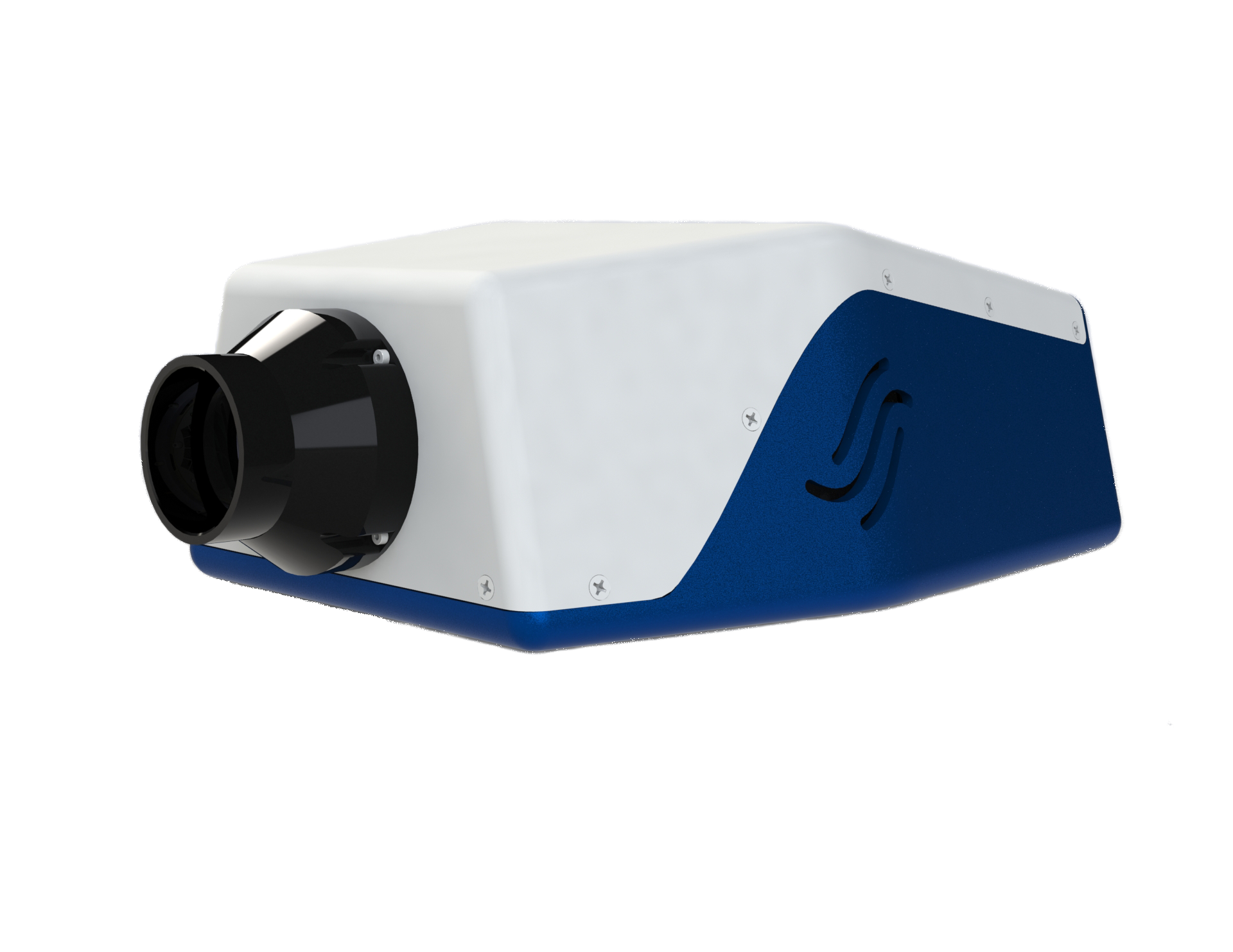LightShift
LightShift™ is the first commercial multimodal snapshot spectral and polarization imager with video-rate acquisition and processing.

Multimodal Imaging
Simultaneously capture spectral, light field and polarization information for every pixel.
Snapshot Acquisition and Processing
Acquires datacubes in a single integration, making it ideal for dynamic scene applications. Captures AND processes the spectral dataset in real-time.
Customized for Your Application
Choose 16 bandpass filters or polarizers specific to your application's region of interest.
LIGHT FIELD VISIBLE INFRARED APPARATUS
LVIRA

LVIRA™ is the first commercial multimodal snapshot spectral and polarization imager with video-rate acquisition and processing.
Multimodal Imaging
Simultaneously capture spectral, light field and polarization information for every pixel.
Snapshot Acquisition and Processing
Acquires datacubes in a single integration, making it ideal for dynamic scene applications. Captures AND processes the spectral dataset in real-time.
Customized for Your Application
Choose 16 bandpass filters or polarizers specific to your application’s region of interest.
Multimodal Imaging
Simultaneously capture spectral, light field and polarization information for every pixel. Separately these dimensions provide a partial representation of the scene. LightShift joins them to achieve better classification performance and provides researchers with new functionality for viewing targeted objects.
Spectral
Material Composition
Materials comprising various objects in a scene reflect, absorb, and emit electromagnetic radiation in amounts that vary with the wavelength. By measuring at multiple wavelengths a spectral signature can be generated to detect, characterize and uniquely identify any given material.
Polarized Light
Surface Characteristics
Imaging in different polarization angles is employed to capture unique surface features of an object. Polarization information finds surface properties of an object such as diffuse or specular reflection, scattering, and refractive index. Polarization has been of great significance to enhance discriminating power of vision-based detection and classification systems.
Light Field
Viewpoint Diversity and Depth
Light field (plenoptic) imaging records the radiance of light rays in a scene. Using a microlens array, the angular dimension of light intensity can be captured and a three-dimensional (3D) model of the scene can be constructed. Light field imaging can render depth estimation, scene recovery, digital refocusing, and dynamic depth-of-field.
Snapshot spectral imagers are systems in which the entire spectral dataset is obtained during a single detector integration period and thus have a distinct advantage in spectral imaging of fast changing phenomena.
The amount of information generated by even snapshot systems is still a key challenge since their application to many practical tasks depends on the ability to process the substantial volume amount of data and make decisions on it in real time. The snapshot spectral imager must process at rates keeping pace with the real-time acquisition of images.
LightShift process the images spectrally in real time, from initial gain and offset compensation and spectroradiometric calibration through decision oriented processing, including spectral correlation using varied algorithms.
Video Rate Snapshot Acquisition and Processing
Video Rate Snapshot Acquisition and Processing
Snapshot spectral imagers are systems in which the entire spectral dataset is obtained during a single detector integration period and thus have a distinct advantage in spectral imaging of fast changing phenomena.
The amount of information generated by even snapshot systems is still a key challenge since their application to many practical tasks depends on the ability to process the substantial volume amount of data and make decisions on it in real time. The snapshot spectral imager must process at rates keeping pace with the real-time acquisition of images.
LVIRA process the images spectrally in real time, from initial gain and offset compensation and spectroradiometric calibration through decision oriented processing, including spectral correlation using varied algorithms.
Interchangeable Filters Customized for Your Application
Choose 16 bandpass filters or polarizers specific to your application’s region of interest. Due to the positioning of the 4x4 filter array on the lens’s front aperature, it can easily be replaced with a new filter array so that the camera can be re-tasked for different applications requiring different wavelengths.
How It Works
LightShift produces accurate light field, spectral and spatial resolution by using a modified plenoptic imager that allows each filter in the array to be imaged to the same point in the scene for each pixel, producing sixteen co-registered spectral images
Case Study
Roger Hanlon is a senior scientist at the Marine Biological Laboratory in Woods Hole, Massachusetts. Hanlon’s lab has published over 200 scientific papers on cephalopods and his research has been featured in The Atlantic, ScienceFriday and the New York Times.
Hanlon was one of the first researchers to take a LightShift prototype into the field and led a research expedition to Indonesia to capture underwater multispectral video of octopus and cuttlefish camouflage in action.
| PERFORMANCE | |
| Spectral Range | 400 - 1000 |
| Spectral Resolution | 25 (average) |
| Spectral Bands | 16 |
| Spatial Resolution | 512 x 512 |
| Data Cube Collection Rate (fps) | 30 |
| Pixel Pitch (μm) | 7.4 (Spectral); 29.6 (Spatial) |
| LENS | |
| Aperture (F/#) | 2.7 |
| Lens Focal Length | 66 mm |
| ENVIRONMENTAL | |
| Weight | 3.17kg (7 lbs) |
| Dimensions | 11.43 cm x 13.97 cm x 25.4 cm (4.5 in. x 5.5 in. x 10 in.) |
| Power | 12 VDC; < 12W |
| System Interface | USB |
VNIR Specifications
Specifications
| Spectral Range |
| 400 - 1000 |
| Spectral Resolution |
| 25 (average) |
| Spectral Bands |
| 16 |
| Spatial Resolution |
| 512 x 512 |
| Data Cube Collection Rate (fps) |
| 30 |
| Pixel Pitch (μm) |
| 7.4 (Spectral); 29.6 (Spatial) |
| Aperture (F/#) |
| 2.7 |
| Lens Focal Length |
| 66 mm |
| Weight |
| 3.17kg (7 lbs) |
| Dimensions |
| 11.43 cm x 13.97 cm x 25.4 cm (4.5 in. x 5.5 in. x 10 in.) |
| Power |
| 12 VDC; < 12W |
| System Interface |
| USB |


